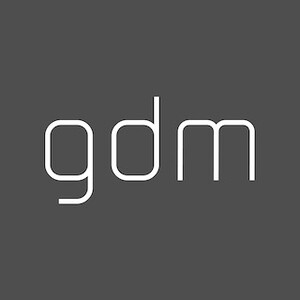Trail to the Moon
gdm Taipei grand opening
December 19, 2024–March 29, 2025
gdm is proud to present Wu Chi-Tsung: Trail to the Moon as the inaugural show for its Taipei space. Trail to the Moon is the artist’s fourth solo exhibition with the gallery, featuring a site-specific installation titled Lying Moon, his signature Cyano-Collages, and a new experimental series titled Wrinkled Texture: Fading Origin.
Light is essential to Wu Chi-Tsung’s practice. In 2012, Wu started exploring cyanotype techniques in his Wrinkled Texture series, investigating the possibilities of painting, images, and shanshui aesthetics. Cyanotype is one of the oldest photographic processes. In Wu’s case, the act of wrinkling replaces the camera to create images, adding a performative dimension to his works. Wu soaks Xuan paper into photo-sensitive solutions, crumpling and molding them repeatedly with his hands, then exposes them under the sun for thirty minutes. The results resemble Chinese shanshui landscapes.
The process of exposing cyanotypes is full of random factors that lead to uncontrollable variations and possibilities. These experiments gradually evolved into Wrinkled Textures. On the processed papers, folds and the interplay between light and shadow replace ink. Wu reinterprets traditional Chinese paintings as photograms.
Fading Origin is an extension of this framework. Due to its convenience, cyanotype was historically widely used for replicating various drawings, hence the term “blueprint.” With every replication, there will inevitably be details that are lost from the original image. Through each copy, data slowly disappears. Unlike analog systems, digital replication does not have originals; every copy is identical, existing as a perfect and eternal entity in an ideal world where humans can achieve anything. In contrast, analog systems resemble the real world with our finite lives—every moment is unique, irreplaceable, and ultimately ephemeral.
“In Fading Origin, I used an original Wrinkled Texture, overlaying it onto a second cyanotype paper to expose and replicate its image as a negative. The second sheet is then replicated onto a third, the third onto a fourth. During this process, the image becomes progressively blurred and faded, eventually becoming unrecognizable, resembling distant memories being forgotten, or the atmospheric perspective drawn on the timeline,” Wu Chi-Tsung says.
In his Cyano-Collages, Wu tears up multiple cyanotype-processed Xuan papers and collages them on aluminium boards, accentuating their valleys and peaks with white acrylic. In recent years, Wu has started experimenting with “cicada wing” Xuan paper, a material named for its delicate and thin nature, adhering them on the very top layer of his collages—a new challenge for the artist. The paper’s texture, transparency, and glossiness are all intimately connected to how it absorbs, refracts, and reflects light. Through the artist’s compositions against highly reflective aluminum boards, these “cicada-wing” Xuan papers bring added depth to Wu’s Cyano-Collages.
The three large Cyano-Collages displayed in this exhibition form a majestic mountain that towers over audiences. Rock climbing is one of Wu’s interests, and its focused nature is similar to his creative process—both require extreme concentration. “Climbing and creating is the same—your spirit and body must be aligned. Beyond the limitations of your physical body and other materialities is the focus of human existence. It is a kind of freedom,” says Wu Chi-Tsung.
Wu Chi-Tsung created an interactive, site-specific project for this inauguratory occasion: Lying Moon (2024), a 6-meter large immersive photography installation. “Lying” holds both physical and metaphorical meanings in this context. The moon prostrates across the ground and audiences are invited to lie on it. The moon is also deceptive, as it is a fictitious replication based on popular impressions. The “moon spots” on its surface were created by Wu from sand, which were then photographed, edited, and collaged. With this interactive work, Wu elaborates on his two decades of investigation into how images change the way we see, imagine, and experience the world.
Both the moon and Wu Chi-Tsung’s cyanotypes are reflections of the sun. They wane and fade according to the light. Wu’s mastery lies in his ability to harness the seemingly uncontrollable aspects of his creative process. After 12 years of experimenting with cyanotypes, Wu does not depend on the light, rather, he plays with it. Delicately, like moonlight dappling over valleys and peaks.
Wu Chi-Tsung (b. 1981, Taipei) is a multi-disciplinary artist whose work seamlessly weaves Western and Chinese arts both on a technical and philosophical level. He received his BFA in 2004 from the Taipei National University of the Arts. After decades of creating experimental ink paintings, Wu turned to photography, video and installations, finding in these new media compelling conceptual stratagems that spurred new and dynamic approaches to making images.

